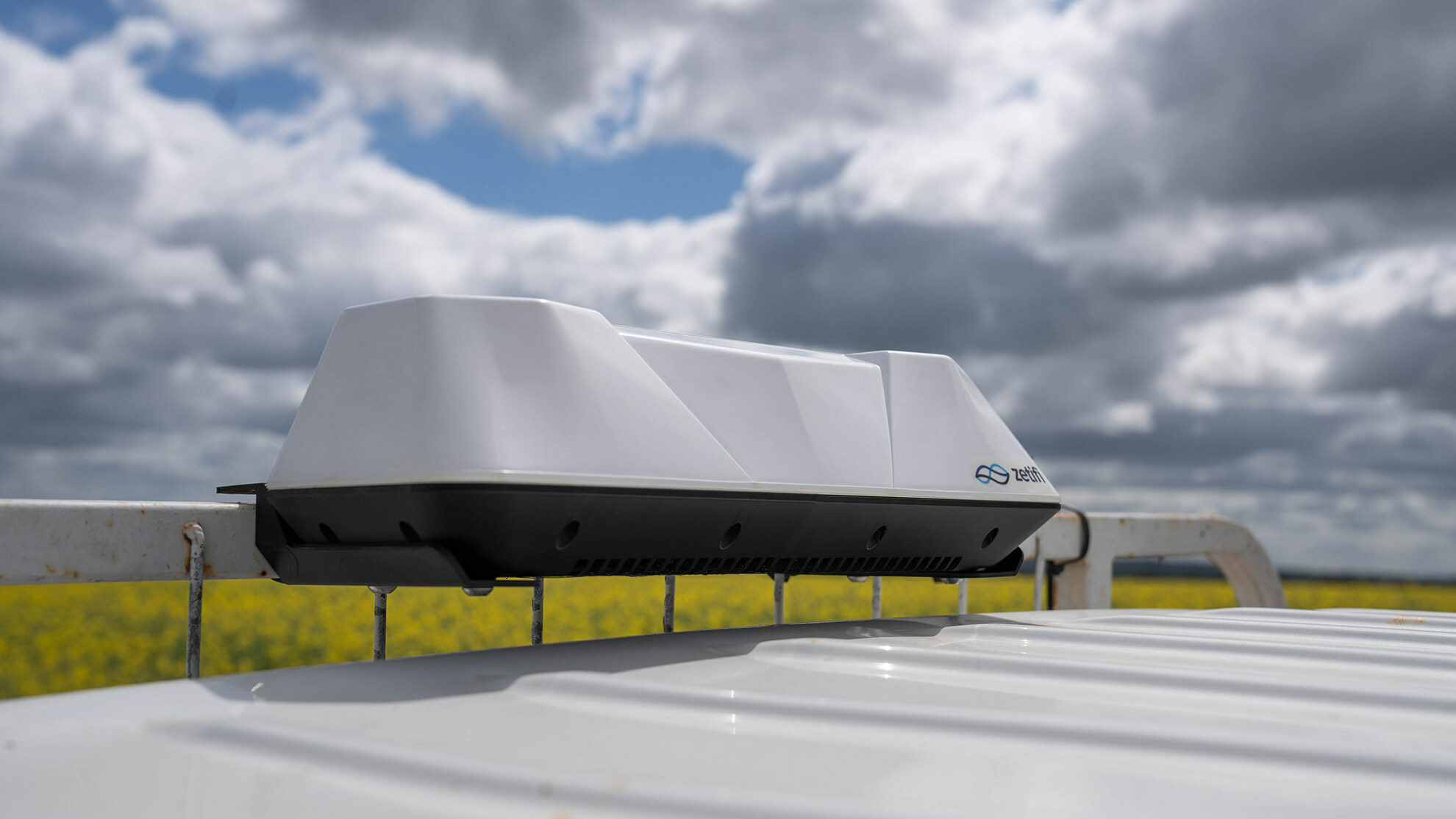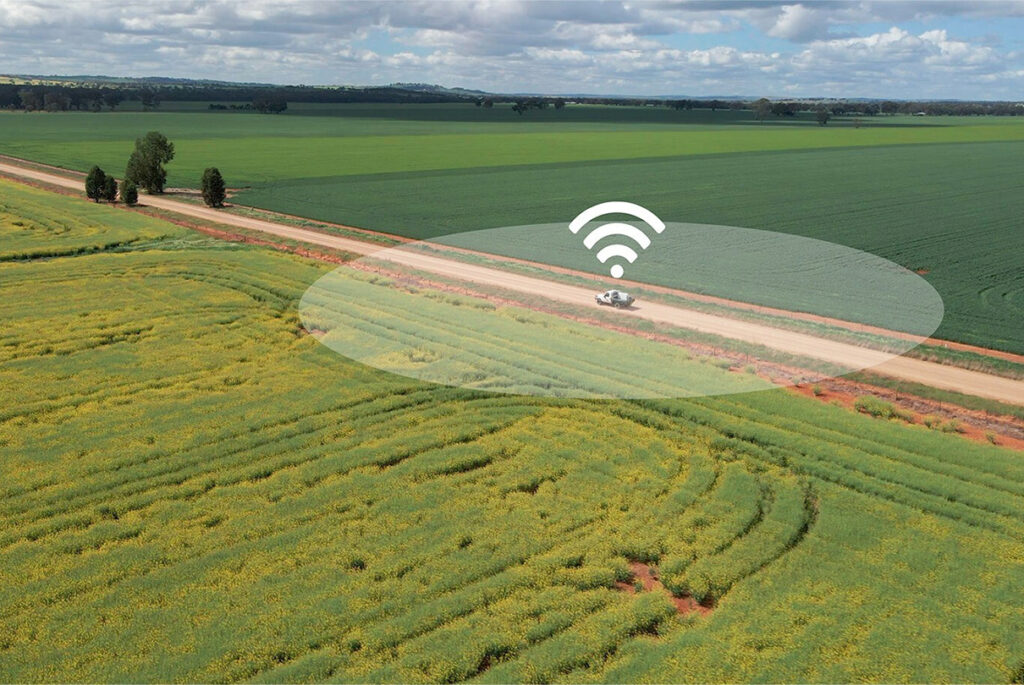Morse Micro, a leading Wi-Fi HaLow silicon vendor, and Zetifi, an innovator in last-mile connectivity for vehicles, machinery and farms, have announced a partnership to enhance Zetifi’s remote-area connectivity solutions with Wi-Fi HaLow technology.
Zetifi’s innovative technology enables farmers and other rural residents to access, extend and optimise coverage from existing radio, cellular or satellite networks, leading to reliable remote area connectivity in areas where phone coverage is otherwise unreliable or unavailable.
Zetifi’s long-range Wi-Fi coverage extension products address a major barrier to the digitalisation of agriculture and are recognised as a foundational technology to unlock significant value from on-farm digital technologies in the years ahead.
Morse Micro’s Wi-Fi HaLow technology will take Zetifi’s farm-wide Wi-Fi connectivity with the ZetiCell and ZetiRover to a whole new level. Zetifi’s and Morse Micro’s collaboration leverages the long-range capabilities of Wi-Fi HaLow to give more farmers than ever before the ability to embrace precision agriculture and remote monitoring and prepare for the introduction of connectivity-dependent autonomous machinery.

“The Internet of Things is revolutionising farming, and now Wi-Fi HaLow – the first version of Wi-Fi optimised for the IoT – is helping Zetifi deliver on the promise of smart, connected farming technology,” said Dan Winson, CEO and founder of Zetifi. “Our collaboration with Morse Micro is a defining moment in Zetifi’s mission to bring digital advancements to modern farming through remote-area connectivity.”
Zetifi currently offers two core products that together offer farming businesses true farm-wide Wi-Fi connectivity possibilities:
- ZetiCell – a long-range Wi-Fi small cell installed on farmhouses or machinery sheds.
- ZetiRover – a vehicle-mounted roaming Wi-Fi hotspot used on off-farm passenger vehicles or farm machinery.
The ZetiRover can be moved easily between vehicles and features fully integrated antennas and dual modems that enable seamless backhaul connections to multiple cellular and Wi-Fi networks. This multi-carrier functionality provides redundancy and extra coverage options to fill in more coverage gaps in remote areas. Crucially, it also enables a Wi-Fi link back to a private ZetiCell, enabling the ZetiRover to repeat Wi-Fi from a cellular or satellite ZetiCell connection up to three kilometers away.

While the ZetiRover currently uses 2.4 GHz Wi-Fi to create the vital link between the ZetiCell and ZetiRover, this link, while adequate, can easily be disrupted by natural obstacles such as trees or hilly terrain. Next-generation ZetiRover and ZetiCell products will incorporate Morse Micro’s long-range, sub-GHz Wi-Fi HaLow technology for direct connections to HaLow-enabled cameras and sensors, and to create more penetrative mesh connections between Zetifi devices.
“Zetifi’s wireless technology brings an innovative approach to rural connectivity, and we are proud to join them in the journey to transform smart farming technology with our Wi-Fi HaLow technology,” said Prakash Guda, Vice President of Marketing and Product Management at Morse Micro. “The collaboration is a crucial step in the evolution of IoT agriculture by extending the wireless range and expanding the coverage of Zetifi’s connectivity solutions for farm equipment operating in remote areas.”
Morse Micro’s comprehensive Wi-Fi HaLow portfolio includes the industry’s smallest, fastest and lowest power IEEE 802.11ah compliant SoCs. The MM6108 SoC supports 1, 2, 4 and 8 MHz bandwidth and can deliver tens of Mbps throughput to support streaming HD video. Morse Micro’s Wi-Fi HaLow SoCs provide 10x the range, 100x the coverage area and 1000x the volume of traditional Wi-Fi solutions.
What is Wi-Fi HaLow?
Wi-Fi HaLow, also known as 802.11ah, is a wireless communication standard developed by the Wi-Fi Alliance. It is designed to provide extended-range and low-power connectivity for Internet of Things (IoT) devices. Wi-Fi HaLow operates in the sub-1 GHz frequency band, which allows it to penetrate obstacles more effectively and cover larger areas compared to traditional Wi-Fi standards operating in higher frequency bands.
The key characteristics of Wi-Fi HaLow include:
- Low Power Consumption: Wi-Fi HaLow is optimized for energy efficiency, making it suitable for battery-powered devices with limited power resources, such as sensors and other IoT devices.
- Extended Range: Operating in the sub-1 GHz frequency band enables Wi-Fi HaLow to achieve longer communication ranges, making it suitable for applications that require connectivity over larger distances.
- Data Rates: While Wi-Fi HaLow sacrifices some data transfer speeds compared to higher-frequency Wi-Fi standards like 802.11ac or 802.11ax, it still provides sufficient bandwidth for many IoT applications.
- Penetration Through Walls: The lower frequency used by Wi-Fi HaLow allows for better penetration through walls and other obstacles, making it suitable for deployment in environments where signal propagation may be challenging.
Wi-Fi HaLow is expected to play a crucial role in connecting a wide range of IoT devices, including smart home devices, industrial sensors, and other applications where low power consumption and extended range are essential considerations. It complements existing Wi-Fi standards and offers a solution for specific use cases that require a balance between power efficiency and connectivity range.



